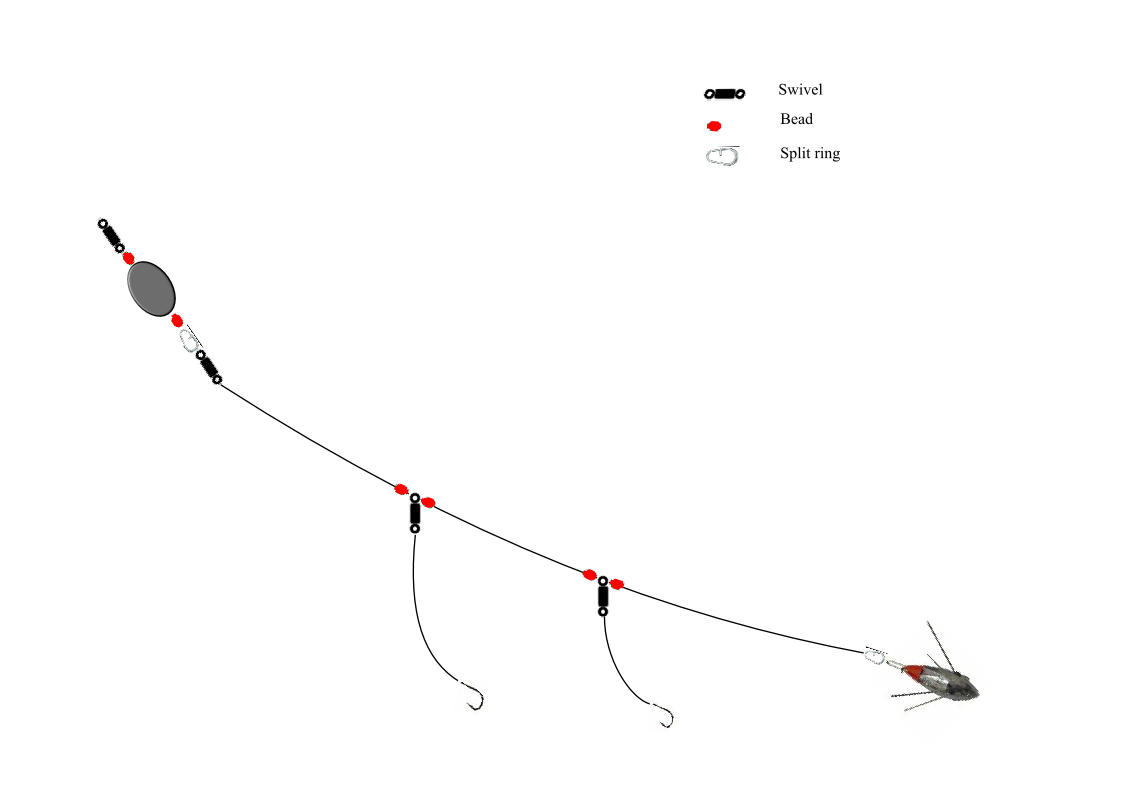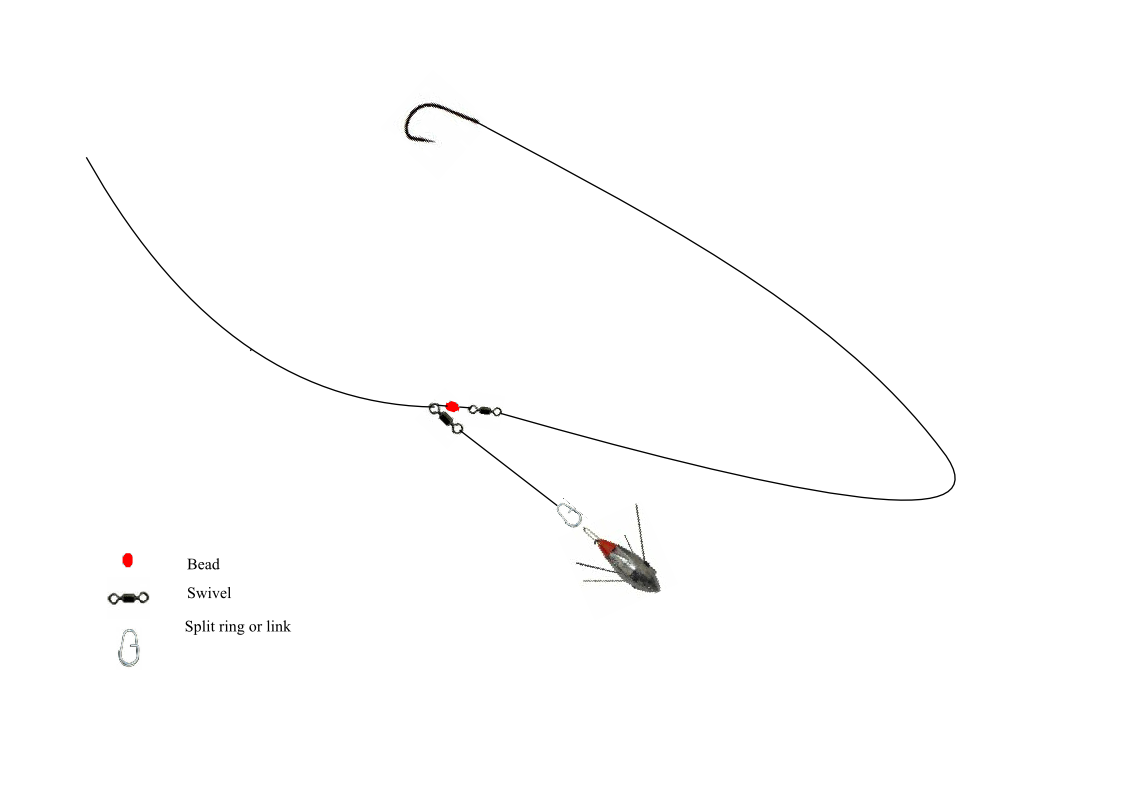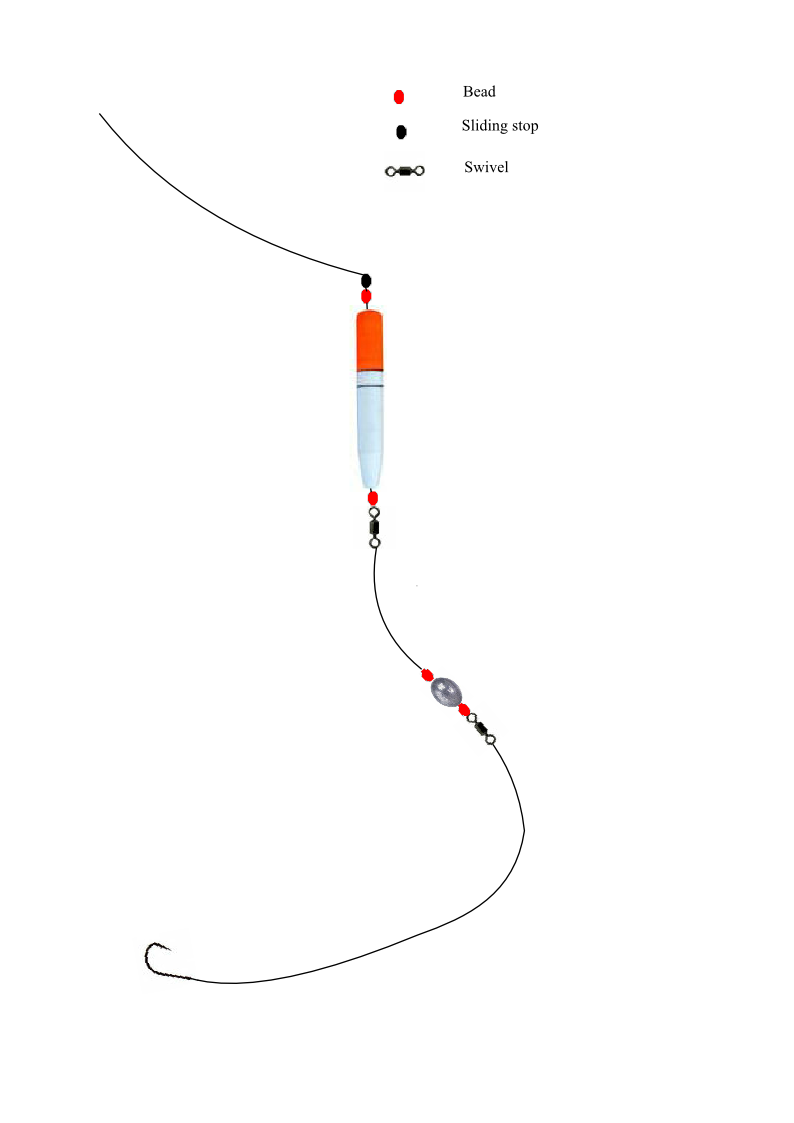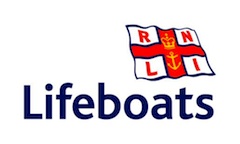Have just spent a bit of time while not being able to fish, doing some diagrams and writing a few words on some of the rigs I use. I’m hoping to add to them at some stage and include some of the more obscure ones out there. This isn’t and wasn’t meant to be a definitive guide to rigs and rig building and I realise that there are many variants of these rigs – but the ones shown here are just the ones that I use.
Click and be taken to the wonderful world of rigs.
The sole rig is essentially a flapper but with an additional weight above the main rig body. This means that when the rig hits the sea bed, it’s pinned down at both ends, ensuring that the baits are where the sole want them – on the deck and not waving around in the current above their heads. For these secondary weights, it’s best to use a lead that won’t roll around, so use something flat, like a coffin lead or as I do, get some of the ‘egg’ weights or balls. I insert heavy gauge wire through the hole and then bash the hell out of it with a hammer until it is flattened sufficiently, then remove the wire. This ensures that the hole isn’t squashed and preventing you putting your line through it. Depending on the conditions, I use anything from ½oz to 1½oz.
Some rigs , have the secondary smaller weight permanently fixed to the rig body, held in place with crimps or similar. I prefer to have mine fixed on a short length of line (same poundage as the rig body) with a swivel at the top end and a split ring at the lower end. I can then quickly change between rigs – clip the secondary weight to the end of the main line and attach the lower end to the top end of a flapper and I have this rig. If I want to change to a flapper, I simply unclip the weighted segment and clip the flapper back to the end of the main line. I keep a selection of the secondary weight attachments, with varying weights to suit the conditions – another advantage over fixed weights. The only drawback to this rig is that it’s no good for long distance or power casting, the added secondary weight makes the whole rig ‘helicopter’ when in flight. My version also has more links, which means more knots and can seem too over-complicated but I find the versatility out-weighs the complication.
Hook lengths are short, no more than six to eight inches – again, this makes sure the bait is on the deck. Hook size is also small; I use size 4 fine wire. If I need anything bigger, I just use another another flapper with a larger hook.
This rig will in fact take any bottom feeding species, not just sole. I have had success using it to take flounder, bass, eels, bream, gurnard, whiting, Pout as well as sole.
 Print This Post
Print This Post

In the simplest terms, this is a rig that has the weight sliding on the main line and is a rig that targets bottom feeders. By allowing the line to run through the weight, it lessens the resistance a fish may feel when making off with the bait. The illustrated rig is the way I set mine up when fishing a wired lead and just illustrates the principle. You can substitute the weight for a drilled bullet, barrel, coffin lead or whatever you want, to suit your needs and conditions. You can also swap the sliding swivel and split ring with a zip slider or a snap swivel, or you could just thread the line directly through the weight – it’s a matter of personal preference.
1. Depending on what type of weight being used, feed main line through either the eye of the weight, a zip slider, snap swivel or in the case of drilled bullets etc, the weight itself. Thread on a bead and tie to a swivel.
2. Tie or clip your hook length to the end of the swivel
3. If you aren’t using the ‘thread through’ weights – drilled bullets and the like, remember to clip your weight to the zip slider or snap swivel.
 Print This Post
Print This Post

This is an adaptation of the standard running ledger and utilises a length of line to connect the weight to the sliding swivel on the main line. The main purpose of the rig is to minimise resistance when a fish picks up and runs with the bait. Simple and easy to set up.
1. Feed main line through a swivel, slide on a bead and tie to a second swivel.
2. Tie or clip your hook length to the end of the second swivel
3. Tie a two to three foot length of line (same poundage as shock leader or main line if no shock leader being used) to the first swivel and then tie on a link or split ring to the free end. Weight will be attached to this.
 Print This Post
Print This Post









